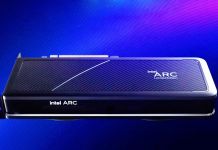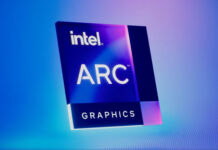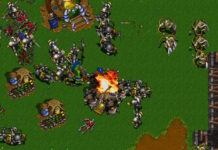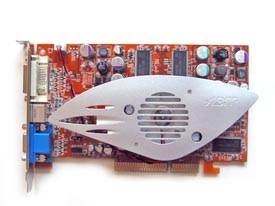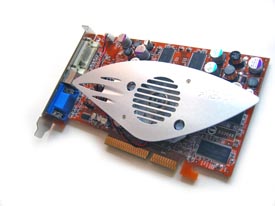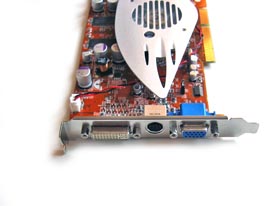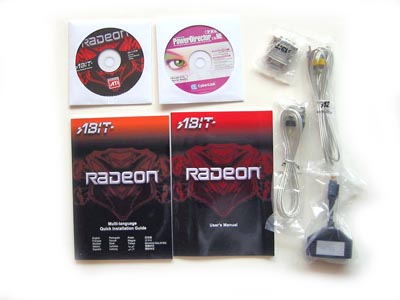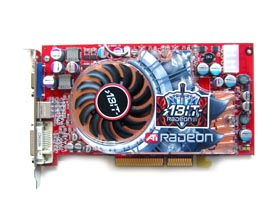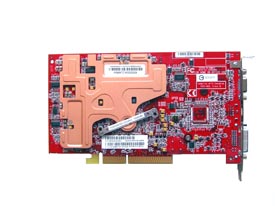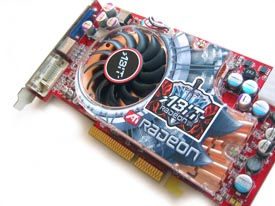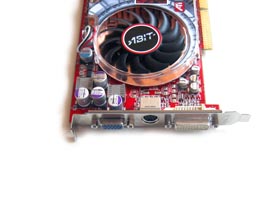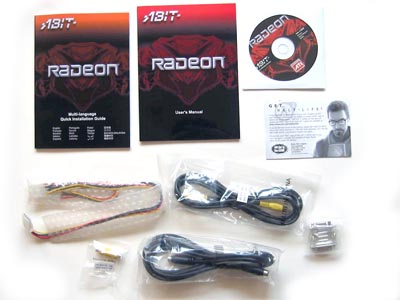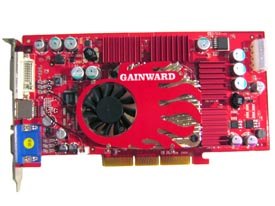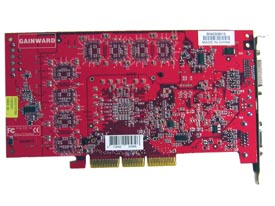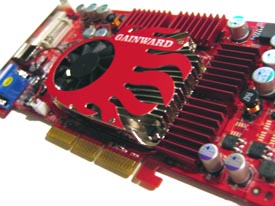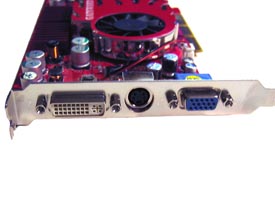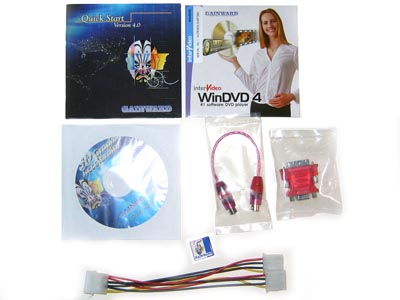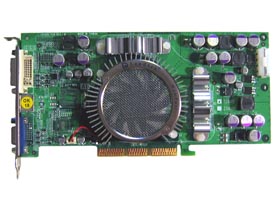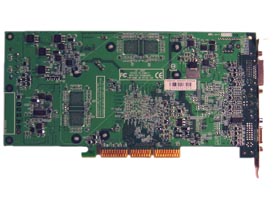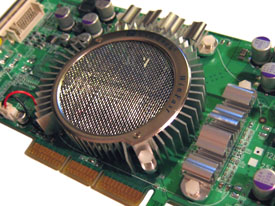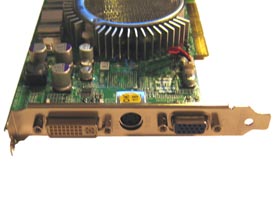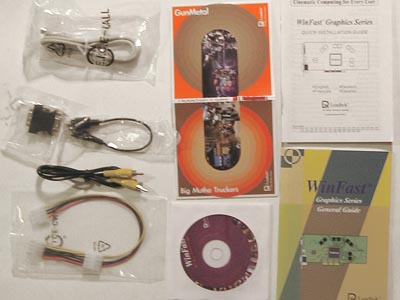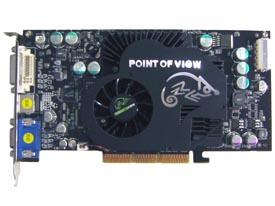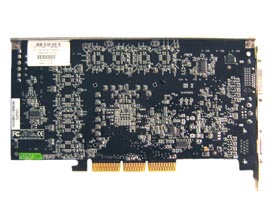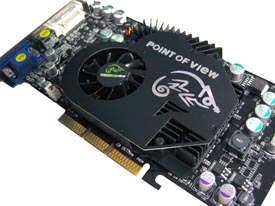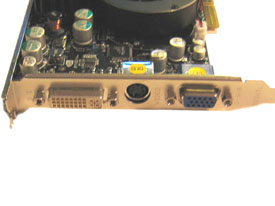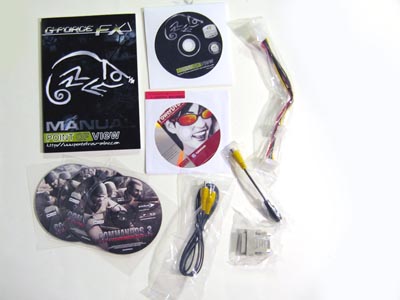It’s time for the second mid end round up this year. On the table we have two GeForce FX 5900 XT, one GeForce FX 5700 Ultra (with GDDR3) and one Radeon 9600 XT. For some extra spicyness we have added the high end Radeon 9800 XT. The brands represented in this review are Gainward, Point of View, ABIT and Leadtek.
It’s time for
the second mid end round up this year. On the table we have two GeForce FX
5900 XT, one GeForce FX 5700 Ultra (with GDDR3) and one Radeon 9600 XT. For
some extra spicyness we have added the high end Radeon 9800 XT. The brands
represented in this review are Gainward, Point of View, ABIT and Leadtek.
Apart from the
fact that the 5700 Ultra card is equipped with GDDR3 there are no obvious
news in this review. And because of that we have reduced the number of performance
tests and will be concentrating on overclocking potentials, accessories and
price levels.
ABIT is a very
well known manufacturer on NH, mostly for their success in the motherboard
market. We have also tested several of ABIT’s graphics cards during the years
but this is the first time we’re reviewing an ATI-based graphics card from
ABIT.
|
ABIT Radeon 9600 XT-VIO
|
|
|
Chipset: |
RV360
|
|
Manufacturing process: |
0.13-micron
|
| Transistors: |
~65 mil.
|
| GPU-speed: |
500 MHz
|
|
Memory speed: |
600 MHz / 9.6 GB/s |
|
Pixel Shader: |
2.0
|
|
Vertex Shader: |
2.0
|
|
Pixel Pipelines/Pixel Fillrate: |
4 / 2000 MP/s
|
|
TMU’s/Texel Fillrate: |
1
/ 2000 MT/s |
|
RAMDAC: |
400 MHz
|
| Amount of memory: |
128 MB
|
| Type of memory and interface: |
128-bit, DDR
|
|
In- and outputs: |
VGA, DVI, S-Video in/out
|
| Extra accessories: |
S-Video cable, composite cable, Video-in/out adapter, DVI->VGA-adapter |
|
Software: |
–
|
|
Retail applications: |
PowerDVD 5.0, PowerDirector Pro 2.55ME
|
|
Estimated price: |
~1800 SEK |
Radeon 9600 XT
doesn’t need any real presentation. The RV360-core delivers great mid end
performance and to increase the quality even further, ABIT has chosen to equip
the card with a PCB, cooling and high quality components of their own. The
card costs 1800 SEK and the availability is pretty good. The price is a few
100 SEK (2-400 SEK) more than you can buy a 9600 XT for today. For some extra
money, you can get a faster card like 5900 XT or Radeon 9800/Pro today.
ABIT Radeon
9600 XT-VIO is the first ATI-based board from ABIT which differs from ATI’s
reference design somewhat. The card’s PCB is the same orange color that we’ve
seen on i.e. their nForce2-based motherboards, ABIT NF7-S v2.0, and should also
be manufactured with a 6-layer design. According to the box, the card should
also be using "high quality japanese capacitors " and we assume that they’re
talking about Rubicon-capacitors that were also used on earlier mentioned
motherboards. Though there are no markings on the capacitors that could
verify our theories.
The memory
modules on the card are in a TOPS-format and doesn’t require any cooling, something that we can’t complain about. The card,
that is a 256 MB model, has 8x 32 MB modules placed on the PCB, four on the
front and four on the back.
The cooler is a custom job by ABIT. Radeon 9600 XT doesn’t create a lot of
heat and the cooler that is placed on it seems to do its job very good. The
ambient level is ok, neither worse nor better than the standard cooling that
ATi uses on 9600 XT.
ABIT’s software
package is nothing that’ll make you jump out of your seat. In addition to
drivers and applications (like PowerDVD 5.0), a copy of PowerDirector from
CyberLink has been sent with the package to use the card’s VIVO-capabilities.
ABIT brings you all the cables you need for VIVO: composite cable, S-Video
cable, Video-in/out adapter and a DVI->VGA adapter.
ABIT’s flagship among their ATI-based graphics cards is Radeon 9800
XT, which was the first cards that ABIT launched with an ATI-chip.
|
ABIT Radeon 9800 XT
|
|
|
|
|
|
Chip: |
R360
|
| Manufacturing process: |
0.15-micron
|
| Transistors: |
~115 mil.
|
| GPU-speed: |
412 MHz
|
| Memory speed: |
730 MHz / 23.4 GB/s |
|
Pixel Shader: |
2.0
|
|
Vertex Shader: |
2.0
|
|
Pixel Pipelines/Pixel Fillrate: |
8 / 3296 MP/s
|
|
TMU’s/Texel Fillrate: |
1
/ 3296 MT/s |
|
RAMDAC: |
400 MHz
|
| Amount of memory: |
256 MB
|
| Type of memory and interface: |
256-bit, DDR
|
| In- and outputs: |
VGA, DVI, S-Video
|
| Extra accessories: |
S-Video cable, composite-cable, power cable, S-video->composite-adapter, DVI->VGA-adapter
|
| Software: |
–
|
| Retail software: |
PowerDVD 5.0
|
| Estimate price: |
~4700 SEK (Exchange rates)
|
Just like 9600
XT 9800 XT isn’t news to any of us. The R360-core is a minor upgrade of the
R300 that came with Radeon 9700 Pro. So far we have had a hard time finding
the card in stores and when we have the price is rather high. It costs almost
1000 SEK more than the competitors to get an ABIT 9800 XT.
Since this was one of ABIT’s absolutely first ATI-based cards there isn’t many changes to ATI’s reference design, more or less none to be precise. The only difference we can tell is a ABIT-sticker on the cooler. The PCB itself is ATI-red and the card is equipped with eight 32 MB-memory modules. Here they use BGA-modules but the lineup is the same as with ABIT’s R9600XT, four on either side of the card.
The cooling itself
is ATI’s own reference pure and simple, which means that both memory and VPU
is cooled with a copper heatsink. The fan is a relatively large one, about
70 mm, and can be regulated. ATI’s own software alerts when the temperature
reaches 70-73 degrees Celsius and then increase the rpm. When running in standard
mode the fan is relatively silent and in no way annoying. When it increases
its rpm (there are only two modes, high or low) it makes quite a lot more
noise, far from the FX5800-level but still noticeable and somewhat annoying.
Most of the noise comes from the pushinging air though, which isn’t as annoying as small
whining fan engines.
The in- and outputs are the usual, VGA, S-video and DVI.
Since ABIT Radeon
9800 XT doesn’t have Video-in-support the software package is even smaller
here and the only thing of value is PowerDVD 5.0. On the other hand this package
includes a Half Life 2 cupon. It’s nice to see that manufacturers ship their
cards with the new DVD-player versions. You shouldn’t need to buy any extra
cables though since get all the cables you might need, S-Video cable, composite
cable, power cable, S-video->composite-adapter and DVI->VGA-adapter.
Gainward does
hardly require any introduction, as it is the most common graphics card manufacturer
at NordicHardware.
|
Gainward FX PowerPack! Ultra/1100XT
|
|
| Chip: |
NV35
|
| Manufacturing process: |
0.13-micron
|
| Transistors: |
~130 mil.
|
| GPU-speed: |
400 MHz / 450 MHz EM
|
| Memory speed: |
700 MHz / 780 MHz EM 21.9 GB/s / 25 GB/s |
| Pixel Shader: |
2.0
|
| Vertex Shader: |
2.0
|
| Pixel Pipelines/Pixel Fillrate: |
4 / 1600 MP/s
|
| TMU’s/Texel Fillrate: |
2 / 3200 MT/s
|
| RAMDAC: |
400 MHz
|
| Amount of memory: |
128 MB
|
| Memory type and interface: |
256-bit, DDR
|
| In- and outputs: |
VGA, DVI, S-Video
|
| Accessories: |
S-Video-composite-adapter, DVI-VGA-adapter, powercable |
| Software: |
Expert Tool
|
| Full version software: |
WinDVD 4
|
| Estimated price: |
1950
SEK (Exchange rates) |
FX 5900 XT is
based on the old and familiar GeForce 5900 Ultra and GeForce FX 5900. The
only difference is that the XT versions (also known as LX or SE) have slower
memory. We have seen many different types of 5900 XT. The standard from nVidia
is 390/700 MHz, but we know of cards with 400/700 and 390/710. Gainwards card
has a standard at 400/700 and if you launch Expert Tool and activate Enhanced
Mode you will get 450/780 instead. This brings the card up to the same level
as an ordinary non-Ultra, and even more.
Gainward set
the price to just below 2000 SEK for this 1100 XT, and with the Enhanced Mode
in mind, this is a fairly just price. However, there are Radeon 9800 Pro cards
that can be found at about the same costs.
The design is
"Gainward red" like expected.
As the card "only" has 128 Mb memory there are no memory banks on
the back of the card.
The cooling is
solid with heavy heatsinks for both GPU and memory. The noise level is acceptable
but could have been quieter.
The bundled software
from Gainward is not normally very juicy and 1100 XT is not an exception.
Beside the drivers it’s only the old WinDVD 4 that stands out.
The third manufacturer which is represented in this review is Leadtek,
which we got to known in earlier reviews through their cards from their GeForce
FX-series. The time has come once more and now it’s a GeForce FX 5700-based
card with some unique characteristics.
|
Leadtek Winfast A360 Ultra TDH
|
|
| Chip: |
NV36
|
| Manufacturing process: |
0.13-micron
|
| Transistors: |
~80 mil.
|
| GPU-speed: |
475 MHz
|
| Memory speed: |
950 MHz / 14.4 GB/s |
| Pixel Shader: |
2.0
|
| Vertex Shader: |
2.0
|
| Pixel Pipelines/Pixel Fillrate: |
4 / 1900 MP/s
|
| TMU’s/Texel Fillrate: |
2 / 3800 MT/s
|
| RAMDAC: |
400 MHz
|
| Amount of memory: |
128 MB
|
| Type of memory and interface: |
128-bit, DDR
|
| In- and outputs: |
VGA, DVI, S-Video
|
| Extra Accessories: |
S-Video cable, composite cable, S-Video-composite adapter, DVI-VGA adapter, power cable |
| Software: |
WinFastDVD, WinFox II, Cult 3D , Coloreal Embedded, Coloreal Visual, Coloreal Bright.
|
| Retail software: |
Gun Metal, Big Mutha Truckers.
|
| Estimated price: |
1800 SEK (Exchange rates)
|
NV36 ,aka GeForce
FX 5700 Ultra, was a considerably better card than its predecessor NV31, aka
GeForce FX 5600 Ultra. The twist with this version is that the card uses
GDDR3-memories and that it is 50 MHz faster than the versions with GDDR2.
In other words this looks like an interesting competitor for our 9600 XT.
Leadtek charges 1800 SEK for their card, just as much as ABIT charges for their equivalent 9600 XT. As we have said earlier this dangerously close to 5900 XT and 9800/Pro.
Leadtek WinFast A360 has the same green PCB color as big brother A380 (FX 5950 Ultra) but otherwise there are quite a lot of differences. One of the big differences are the memory which in this case is of GDDR3-model. GDDR3 is a type of memory which saw on e.g. NV40 that with its high frequencies will be used more and more with high end cards. Leadtek WinFast A360 is only equipped with 128 MB of memory and despite the GDDR3-memorys high frequencies the bandwidth becomes relatively low with a 128-bit memory bus.
GDDR3-modules are always of BGA-format and here they use four 32 MB-modules on the front of the card.
The cooling gives
you a bit of a nostalgic feeling and even if it’s not that big it handles
it assignment flawlessly. The memory modules are also equipped with heatsinks.
One of the GDDR3-memorys advantages is supposed to be lower heat dissipation,
but we assume that Leadtek wants to play it safe with their first GDDR3-equipped
card. The fan cover has to purposes; first of all to block any dust particles
and second to reduce whining wind noise. The level of noise is clearly acceptable
and is about the same level as ABIT’s 9600 XT.
Leadtek is without
competition when it comes to the software, but that was hardly a surprise
if you remember the review of the Leadtek WinFast A380 Ultra. Except for Leadtek’s
own software such as WinFastDVD and WinFox II they also send along several
useful applications and even two games, Gun Metal and Big Mutha Truckers.
Hardly the "game of the year" competitors, but still a nice addition.
Leadtek are just as generous as the others when it comes to cables, you will
find any cable you might possibly need for your graphics card.
Point Of View is new brand here at NH even if the manufacturer has been available on the swedish market for a long time. Time to take a closer look at one of their GeForce FX-based graphics cards.
|
Point Of View GeForce FX 5900 XT
|
|
| Chip: |
NV35
|
| Manufacturing process: |
0.13-micron
|
| Transistors: |
~130 mil.
|
| GPU-frequency: |
390 MHz
|
| Memory frequency: |
680 MHz / 21.8 GB/s |
| Pixel Shader: |
2.0
|
| Vertex Shader: |
2.0
|
| Pixel Pipelines/Pixel Fillrate: |
4 / 1560 MP/s
|
| TMU’s/Texel Fillrate: |
2 / 3120 MT/s
|
| RAMDAC: |
400 MHz
|
| Amount of memory : |
128 MB
|
| Memory type and interface: |
256-bit, DDR
|
| In- and out connections: |
VGA, DVI, S-Video
|
| Extra accessories: |
S-Video-composite-adapter, DVI-VGA-adapter, ATX-cable |
| Software: |
–
|
| Full version software: |
PowerDVD 5.0, Tomb Raider Angel Of Darkness
|
| Approximate price: |
2100 SEK (Exchange rates)
|
FX 5900 XT is based on the old well known GeForce FX 5900 Ultra and GeForce FX 5900. The only practical difference is that the XT-versions (sometimes also called LX or SE etc.) has somewhat slower memories. We have seen many versions of the 5900 XT. The standard that nVidia has set is 390/700 MHz. POV has chosen to use a bit slower memories at 680 MHz.
Point Of View charges approximately 2100 SEK which is a bit more than Gainward charges for their 5900 XT, and don’t forget that the Gainward card has higher frequencies. This puts the card at the same level as a Radeon 9800 Pro.
Point Of View is otherwise known for their low prices but this time they are overcharging.
Personally I think that POV’s card has a really neat design, a completely black PCB which has been crowned with a black cooler with a silver touch. It feels like powerful card in some way, alas the frequencies speaks of something else but we shouldn’t jump to conclusions until the performance tests are done. The design is very good according to us though, but as we all known taste varies.
The card is a 128 MB-version but actually uses 8 st memory chips which means that they individually have a capacity of 16 MB, the other cards use 32 MB-modules.
The cooler is as I said in the same color as the PCB and covers both memory and VPU. The level of noise is about the same as other 5900 XT, which is good of course.
The software
package for this card is very good. PowerDVD 5.0 and the latest Commandos-game
is included.
The Test system
hasn’t changed since the last time.


